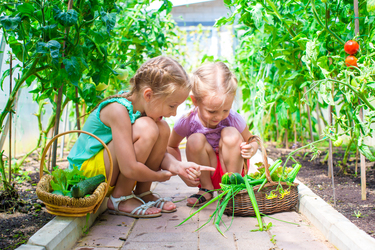
Yates is searching for Australia’s next top junior gardener to inspire more children to get grubby in the garden.
The winner will become the face of the brand’s new kids’ gardening website and their gardening tips and tricks will be shared through social media and a national garden club.
He or she, and the family, will also receive a trip to Melbourne for the Melbourne International Flower and Garden Show in March 2019.
The competition closes October 14. Visit nexttopgardener.com.au.
Yates horticulturalist Angie Thomas shares her top garden activities to enjoy with the kids
1. Build an outdoor fort
Your kids will be occupied for hours building a fort using furniture, sheets and empty boxes. This is a great activity, not just because it’s free but because your kids will need to practice teamwork to ensure their fort is the strongest it can be.
2. Go on an insect safari
Your garden is buzzing with insects and bugs for your little ones to find and learn about. Head outdoors with the kids armed with a pen, paper and magnifying glass to learn about all walks of life and hone their observation skills by uncovering the secret lives of bugs.
Kids will learn to pay attention to smaller details while getting into your garden’s nooks and crannies looking for their new eight or six-legged friends.
3. Visit your local botanic garden
If you have limited green space at home you can still explore the wonderful world of growing at your local botanic garden. Take a walk through the grounds and pack a lunch – this is a great way to get some fresh air and inspire your kids to learn more about gardening together.
4. Go backyard camping
Set up your tent, have a barbecue dinner and snuggle up in your sleeping bags under the stars for some quality family bonding time.
5. Build a worm farm
This hands-on activity is a mini science experiment and kids can see up close what goes on in the life of a worm. All you need are a few household items like a large plastic bottle and clingwrap, sand, soil, leaves and earthworms from your garden. Watch your new friends dig tunnels and mix up the sand and soil.
Hi there,
Would you like to receive home decor
ideas and DIY tips to your inbox?
Subscribe to our mailing list!

